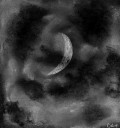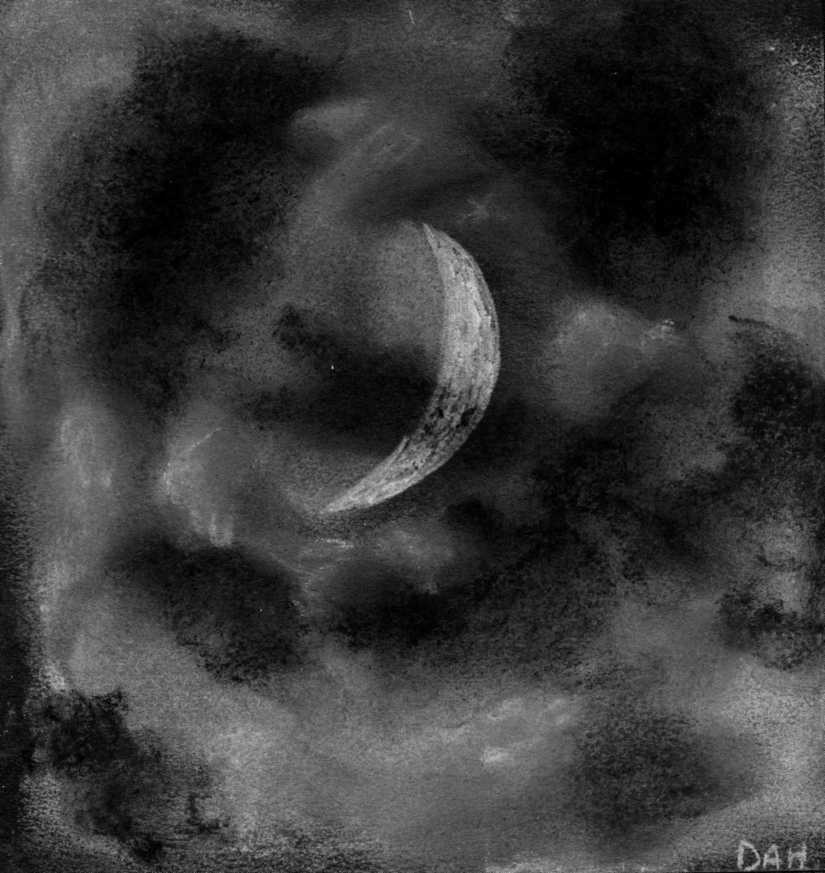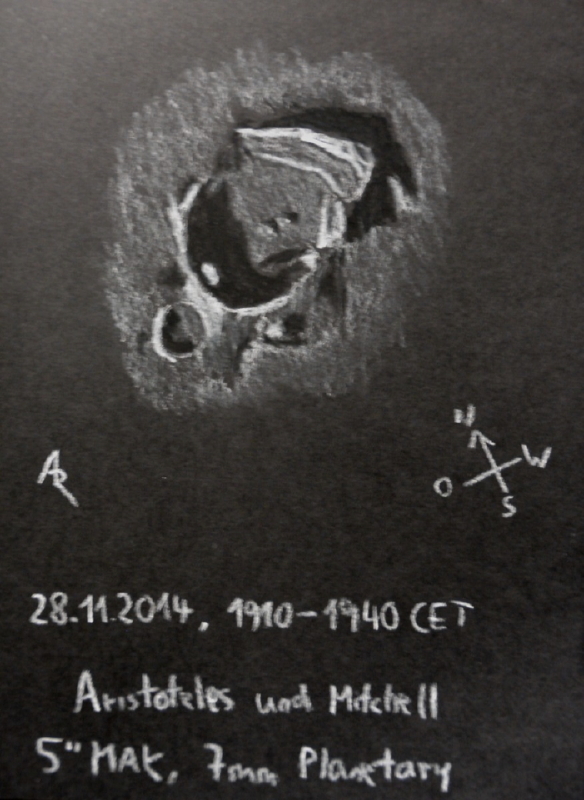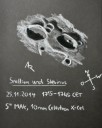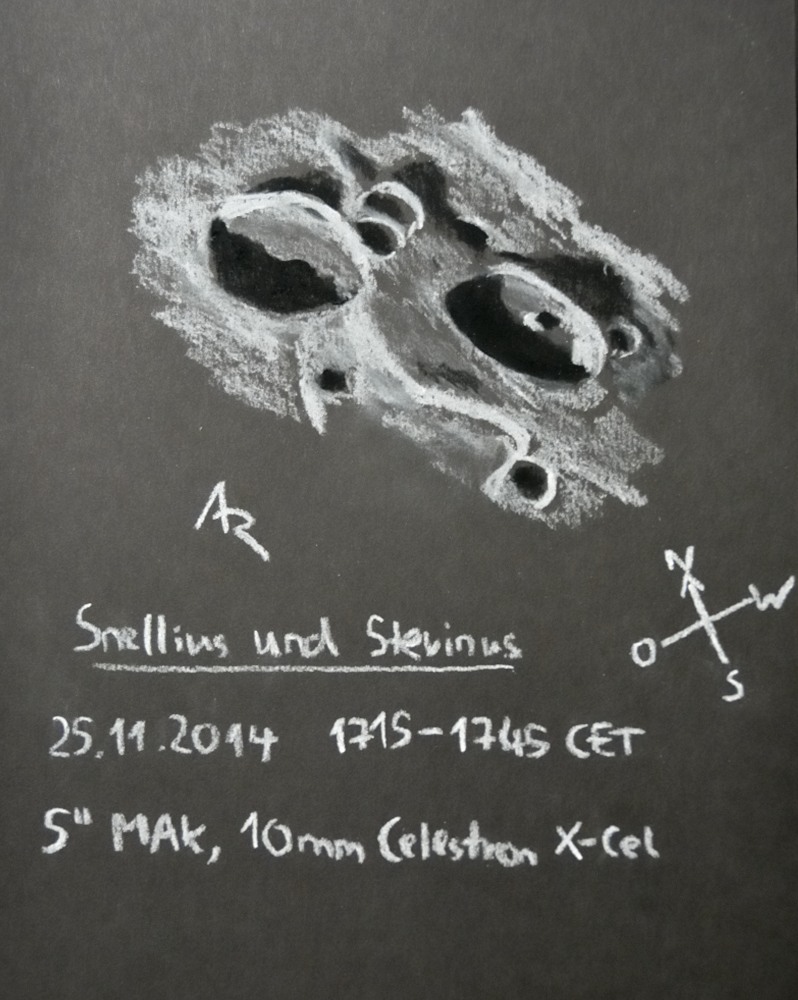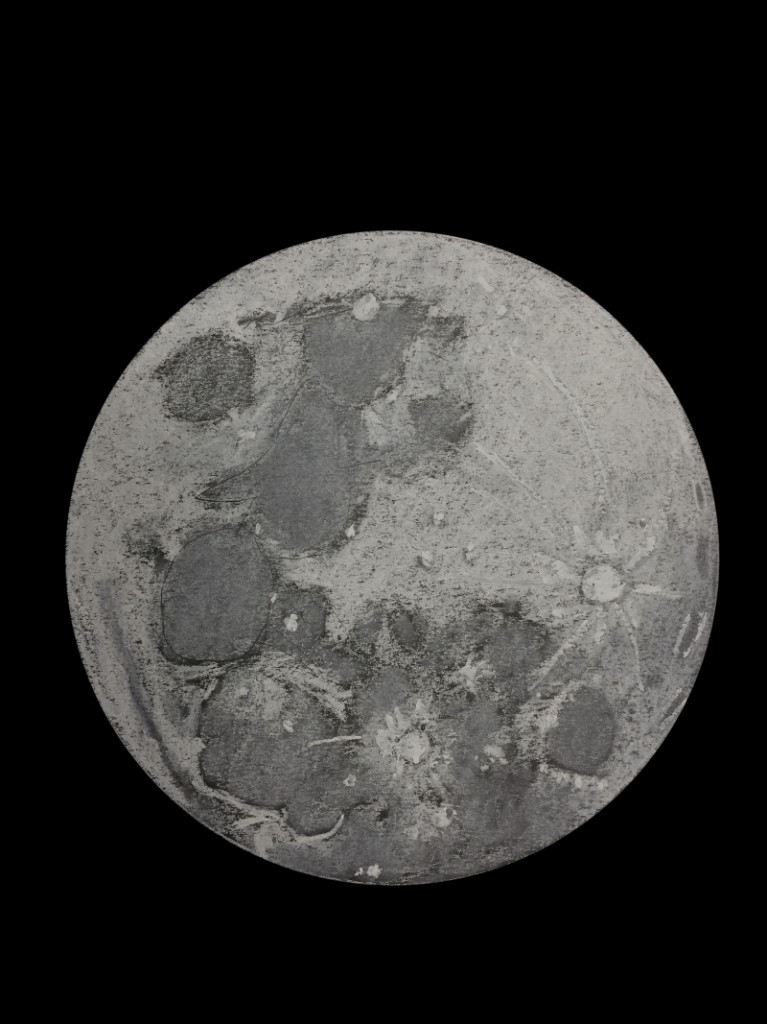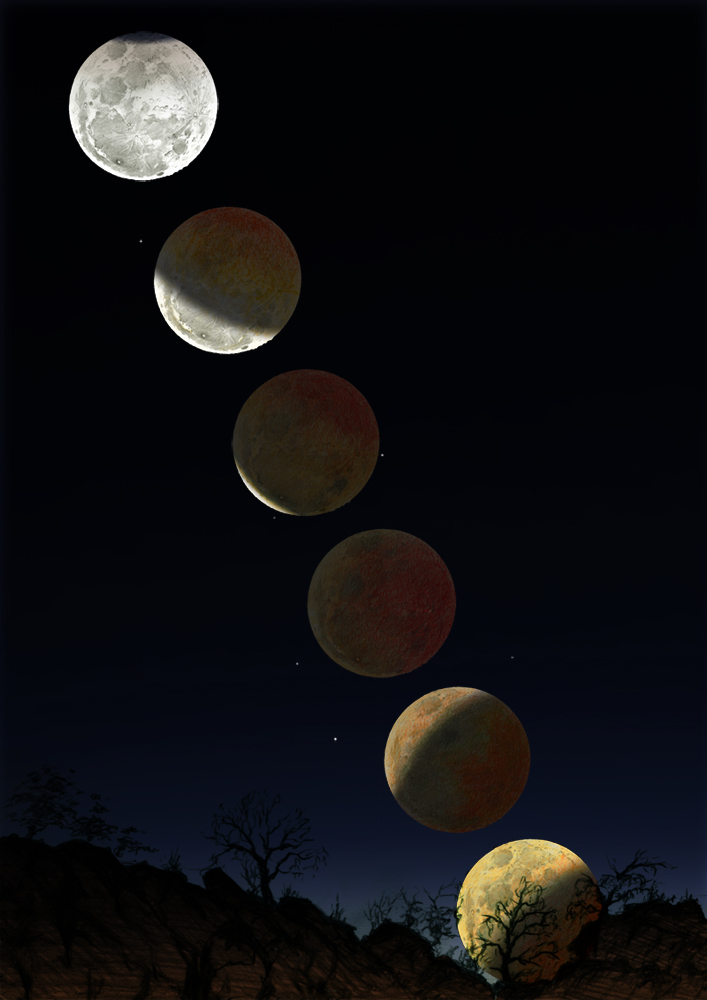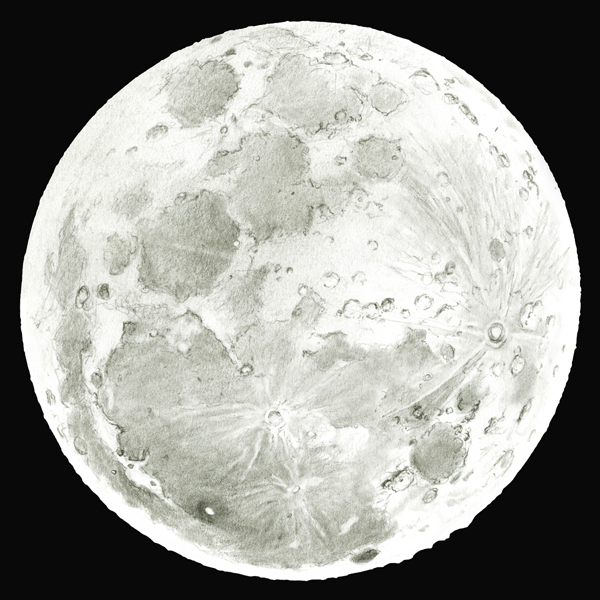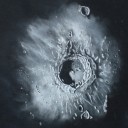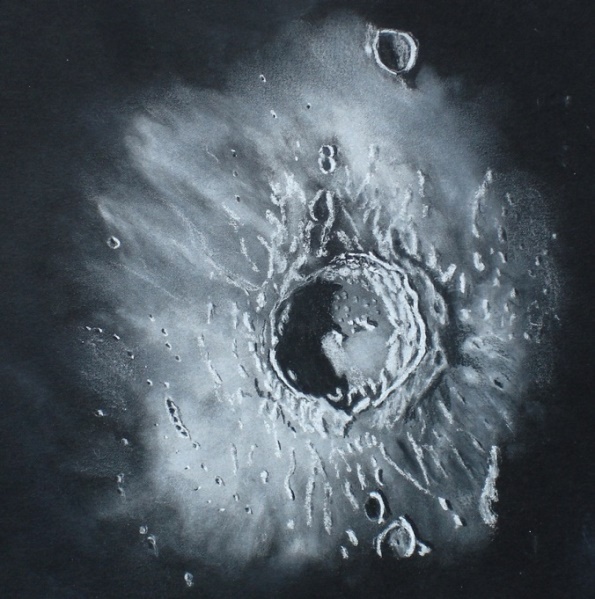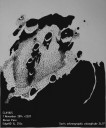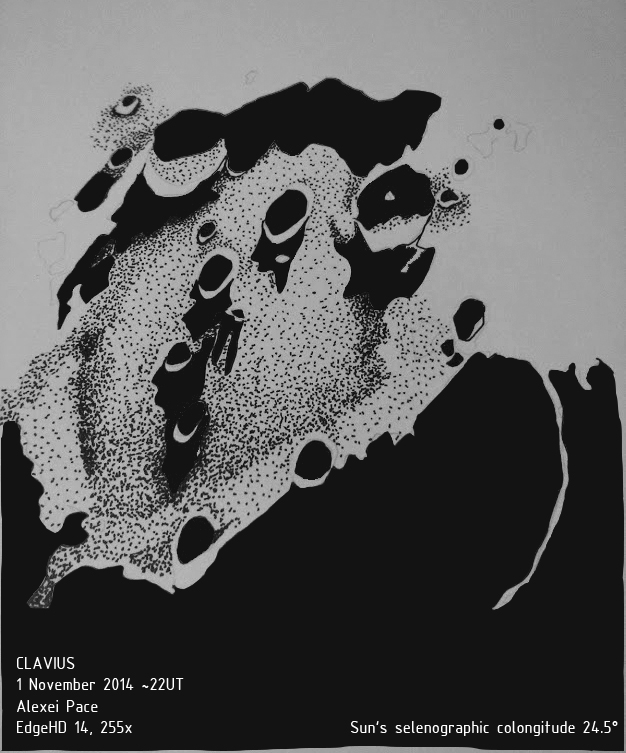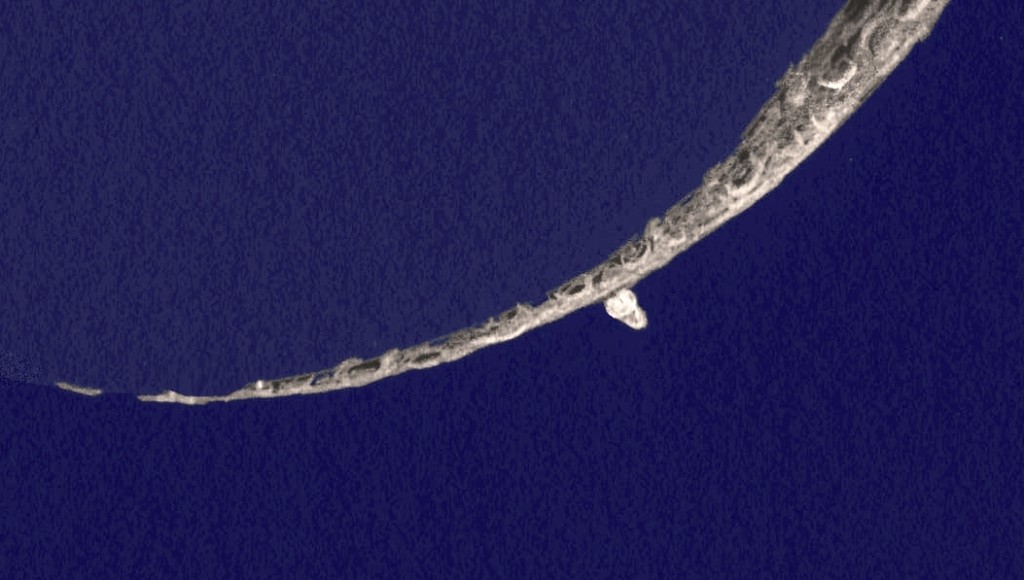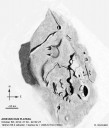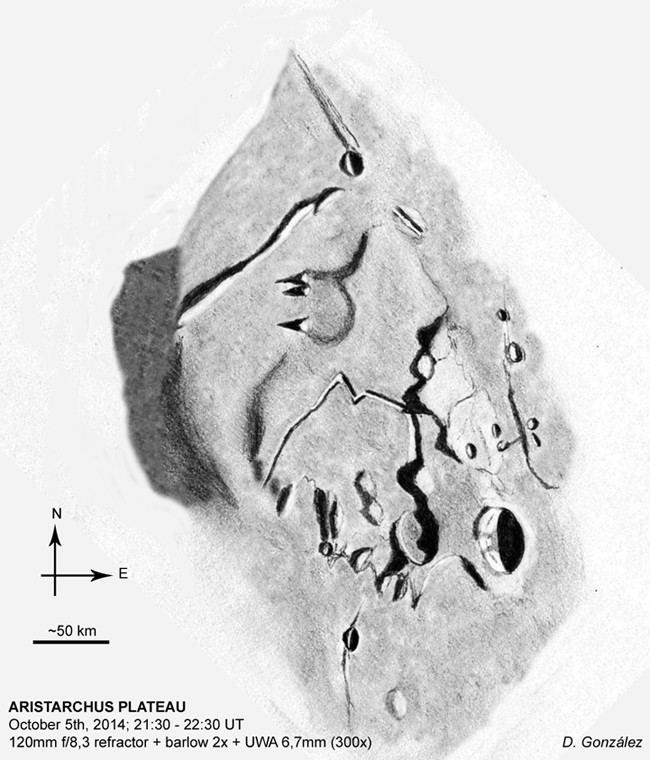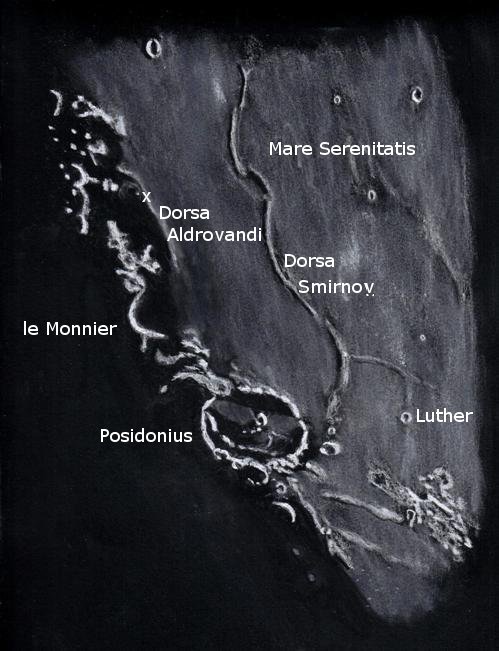
Crater Posidonius at Sunset
On this night I watched the sunset terminator creep slowly toward ring-plain crater
Posidonius; in addition I sketched the crater and other features on the floor of Mare Serenitatis. Posidonius (96 km.) is an old upper Imbrian era impact remnant. Its age is underlined by the way shadows penetrate the rim at numerous points betraying impact damage there. The highest part of the rim is on the terminator side of this crater. Sunlight was still reaching Posidonius A and other high points on ridges including one on the inner ring. Beyond this crater to the west and south the great serpentine ridge could be seen in best light. This ridge is made up of dorsa Smirnov and dorsa Lister.
Sketching:
For this sketch I used: black Strathmore 400 Artagain paper 9″x 12″, white and black Conte’ pastel pencils and a blending stump. After scanning, Brightness was decreased just slightly using my scanner.
Telescope: 10 inch f/ 5.7 Dobsonian and 6 mm eyepiece 241x
Date: 08-07-2012, 06:30 – 07:40 UT
Temperature: 29°C (85° F)
clear, calm
Seeing: Antoniadi III
Colongitude 147.9 °
Lunation 19 days
Illumination: 73.4 %
Frank McCabe

